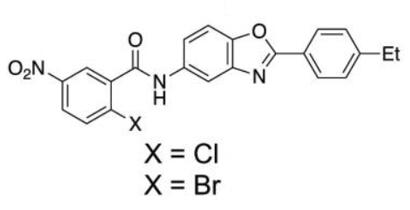Nuclear receptors, a class of intracellular proteins, are pivotal in regulating gene expression in response to hormonal signals. These receptors are crucial in numerous physiological processes and are implicated in various diseases, making them prime targets for therapeutic intervention. DNA-encoded libraries (DELs) have revolutionized the field of drug discovery, providing a robust platform for the identification of bioactive small molecules. The integration of DELs technology into nuclear receptor research offers a powerful method to discover novel ligands with high specificity and potency.
Screening Strategies for Nuclear Receptors Using DELs
The screening strategies for nuclear receptors using DELs encompass a comprehensive and high-throughput approach, including:
Target-Based Screening
Binding events between the receptor and library compounds are identified through the DNA tags. High-affinity binders are then isolated, and their DNA sequences are amplified and sequenced, revealing the identity of the corresponding small molecules. This approach enables the efficient identification of potential ligands from vast chemical libraries.
Affinity Selection
Affinity selection is critical in DELs screening for nuclear receptors. This process ensures that only compounds with the highest binding affinities are retained for further analysis. Techniques such as magnetic bead-based separation and affinity chromatography are commonly used to isolate receptor-bound compounds. The DNA tags are subsequently decoded to identify the high-affinity ligands.
Examples of DELs Screen for Nuclear Receptors
Below are examples of nuclear receptors identified through DELs selection:
PPAR Modulators
Peroxisome proliferator-activated receptors (PPARs) are nuclear receptors involved in regulating metabolism. DELs have been instrumental in identifying novel PPAR modulators. For example, a study using DELs with over a billion compounds identified several potent PPARγ agonists [1]. These compounds demonstrated significant glucose-lowering effects in diabetic animal models, highlighting their therapeutic potential.
 Fig. 1 Structure of Potent Covalent PPARγ Inverse-Agonists [1].
Fig. 1 Structure of Potent Covalent PPARγ Inverse-Agonists [1].
Estrogen Receptor Ligands
The estrogen receptor (ER) is a key target in the treatment of breast cancer, with therapies often focusing on modulating its activity. However, the complexity of ER's binding requirements poses challenges in discovering new modulators through traditional methods. A study [2] leveraging DELs technology screened vast libraries to uncover unique ER ligands. Researchers identified several selective estrogen receptor modulators (SERMs) that exhibited high specificity and favorable activity profiles. These novel compounds provided promising leads for the development of new breast cancer therapies.
 Fig. 2 Structures of Different Classes of SERMs [2].
Fig. 2 Structures of Different Classes of SERMs [2].
Advantages of DELs for Nuclear Receptors Targeting

- Speed and Efficiency: DELs dramatically reduce the time and resources needed for ligand discovery.
- Scalability: The ability to screen billions of compounds simultaneously.
- Precision: High specificity in identifying ligands with desired binding characteristics.
At Alfa Chemistry, we specialize in leveraging the power of DELs to revolutionize the identification of novel ligands for nuclear receptors. Our cutting-edge DELs technology provides unparalleled efficiency, diversity, and precision, enabling you to uncover breakthrough compounds that can transform therapeutic development. Contact us today to learn more about our services and discover how we can empower your journey towards innovation and success.
References
- Orsi DL, Pook E, Bräuer N, et al. Discovery and Structure-Based Design of Potent Covalent PPARγ Inverse-Agonists BAY-4931 and BAY-0069. J Med Chem. 2022 Nov 10;65(21):14843-14863.
- Patel HK, Bihani T. Selective estrogen receptor modulators (SERMs) and selective estrogen receptor degraders (SERDs) in cancer treatment. Pharmacol Ther. 2018 Jun;186:1-24.
